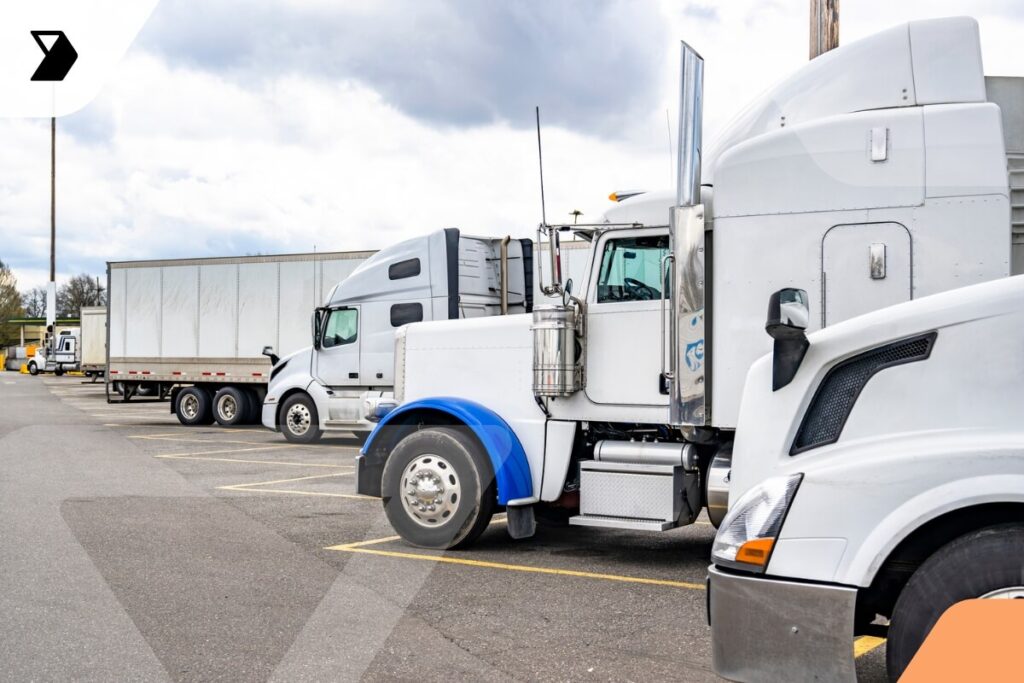Preventing Cargo Theft: Advanced Security Measures for High-Value Shipments
Cargo theft is on the rise, and if shippers haven’t already started looking for ways to improve their security, it’s time to do so.
Ready to transform your supply chain?

2023 saw a 57% increase in cargo theft incidents amounting to almost $130 million worth of goods, compared with 2022 figures. It’s clear that you need to implement advanced security measures if you want to protect high-value shipments, the integrity of your supply chain, and your professional reputation.

There are several strategies you can implement proactively to safeguard your shipments, reduce the risk of theft, and deliver your cargo safely to its destination. Explore the shipping process’ vulnerabilities and find strategies for improving the security of your cargo below.
Shipping Process Vulnerabilities
Cargo theft can happen during any stage of the shipping process, as each has unique vulnerabilities. These include:
Loading and unloading: During the loading and unloading process, the trailer doors are open, stock is sometimes deposited or on loading bays before being packed into the trailer, and personnel might be distracted by the various tasks to be completed during these critical stages. All these factors create opportunities for cargo theft.
Storage: Limited access control, deficient surveillance methods, and a lack of robust security measures at many storage facilities and warehouses leave stored cargo at risk of theft.
In transit: High-value shipments are probably at their most vulnerable when in transit. Trucks are in danger of being hijacked while on the road or when at stops. There’s also the possibility that cargo theft or pilfering can occur at stops with limited to no security.
Advanced Security Strategies
Implement the following advanced security strategies to reduce cargo theft.
01. Create a secure shipping plan
Devise a secure shipping plan and share it with your drivers and other personnel involved in the shipping process. The plan should be comprehensive enough to cover various aspects of shipping.
Ensure communication security is covered by the plan. Any sharing of route and schedule information should take place via encrypted communication channels and be governed by stringent information protection guidelines. Ensure that all sensitive information regarding schedules and routes is shared only with those who need it to prevent potential cargo thieves from learning about your shipments’ movements.
Plan alternative schedules and routes to allow your drivers to respond effectively to unforeseen events or potential threats. Use geofencing technology to create virtual boundaries around specific geographic areas, which will alert you or your fleet managers to any deviations from the planned route. Ensure all your employees receive cargo and fleet security training and that they understand their role in securing shipments and maintaining a culture of vigilance.
02. Conduct thorough interviews and background checks
The security of your shipments depends partly on the integrity of your employees. Implement thorough interviewing, hiring, training, and appraisal processes.
Conduct standard job interviews with employment history analysis and references from previous employers and conduct behavioral interviews in which candidates explain how they have demonstrated responsibility and integrity in specific situations.
Perform background checks for criminal records. Create a code of conduct and ethics, share it with all employees, make sure they understand it and ask them to sign it. Conduct regular training sessions on cargo security and ethical conduct. Institute random drug and alcohol testing for all drivers and warehouse/yard personnel. Conduct regular performance appraisals of all staff.
03. Invest in security technology
The protection that advanced security technologies offer your cargo is worth the initial investment. Three options to consider include electronic locks and alarms, yard management systems for real-time collaboration with drivers, and cameras (dash cams and surveillance cameras).
You can monitor and control electronic locks remotely, allowing you or your fleet managers or drivers to open the doors only when trucks stop at authorized destinations. If you have installed alarms in your trucks, they will trigger if any unauthorized persons open the doors.
Telematics systems can be used to check trucks’ speed, driving behavior, location, and deviations from planned routes in real-time. Dash cams and surveillance cameras can also act as a deterrent to cargo theft. They can provide a view of the driver and any passengers and provide valuable evidence if any thefts occur. If a crash occurs, the footage can also be used as evidence for truck accident lawyers and other legal professionals to determine liability.
04. Secure yards and warehouses
Given that significant amounts of cargo theft happen at yards and warehouses, it’s important to beef up security measures at these locations. Implement various security measures so that you do not rely on one only.
Ensure there are secure parking areas for trucks and trailers. Use barriers and bollards to control access, fence these areas in, and install adequate lighting. Install good-quality surveillance cameras in the warehouses, yards, and other parking areas. Install access control systems that use biometrics, keycards, or PINs to grant authorized personnel entry into warehouses, and be sure to revoke all former employees’ access to those areas.
Supplement surveillance cameras and access control with intrusion detection systems and schedule regular security patrols. Conduct security audits on a regular basis to assess the effectiveness of your security measures and to identify potential weak spots.
05. Plan routes that offer secure parking facilities
Cargo theft can happen during dwell time or when trucks are parked overnight at parking facilities and drivers are resting. Take secure parking facilities into account when planning routes and ensure all your drivers know which facilities are preferred.
Look for parking facilities in visible, well-traveled areas and with security features such as access control systems, on-site security personnel, surveillance cameras, and adequate lighting.
Making Prevention A Priority
While there is no guarantee that any of the advanced security measures you implement will completely prevent cargo theft, taking a multifaceted approach will give would-be thieves fewer opportunities while also presenting them with numerous deterrents.
Security should be a concern in every aspect of your operations, from interviewing, onboarding, and ongoing training to your drivers’ rest stops. With the right measures in place, you can protect high-value shipments, your drivers, your vehicles, your business premises, and your company’s reputation.
Continue reading
Ready to transform your supply chain?
Increase efficiency and productivity. Say goodbye to delays, handwriting errors, and time-intensive manual data entry.



